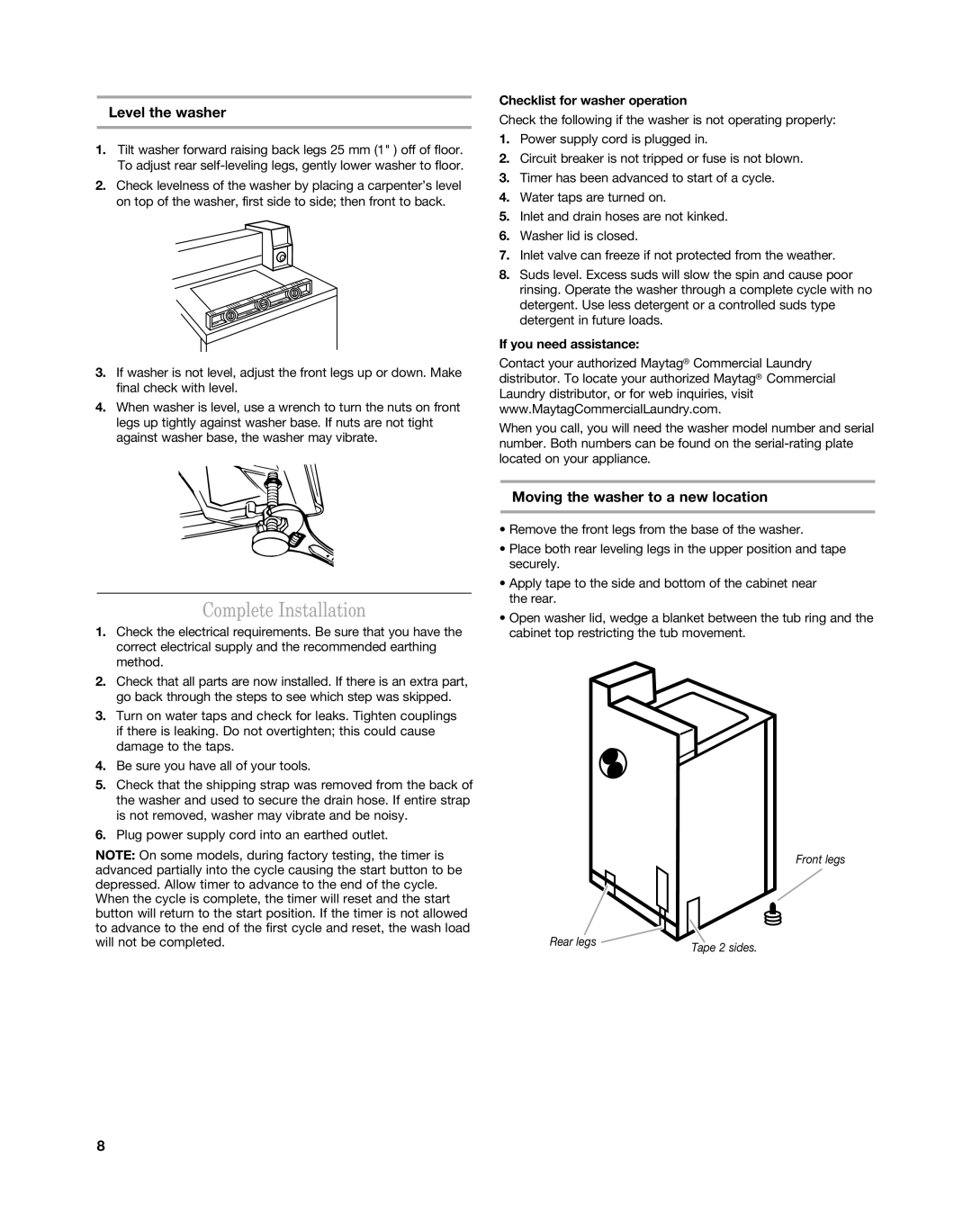
Level the washer
1.Tilt washer forward raising back legs 25 mm (1" ) off of floor. To adjust rear
2.Check levelness of the washer by placing a carpenter’s level on top of the washer, first side to side; then front to back.
3.If washer is not level, adjust the front legs up or down. Make final check with level.
4.When washer is level, use a wrench to turn the nuts on front legs up tightly against washer base. If nuts are not tight against washer base, the washer may vibrate.
Complete Installation
1.Check the electrical requirements. Be sure that you have the correct electrical supply and the recommended earthing method.
2.Check that all parts are now installed. If there is an extra part, go back through the steps to see which step was skipped.
3.Turn on water taps and check for leaks. Tighten couplings if there is leaking. Do not overtighten; this could cause damage to the taps.
4.Be sure you have all of your tools.
5.Check that the shipping strap was removed from the back of the washer and used to secure the drain hose. If entire strap is not removed, washer may vibrate and be noisy.
6.Plug power supply cord into an earthed outlet.
NOTE: On some models, during factory testing, the timer is advanced partially into the cycle causing the start button to be depressed. Allow timer to advance to the end of the cycle. When the cycle is complete, the timer will reset and the start button will return to the start position. If the timer is not allowed to advance to the end of the first cycle and reset, the wash load will not be completed.
Checklist for washer operation
Check the following if the washer is not operating properly:
1.Power supply cord is plugged in.
2.Circuit breaker is not tripped or fuse is not blown.
3.Timer has been advanced to start of a cycle.
4.Water taps are turned on.
5.Inlet and drain hoses are not kinked.
6.Washer lid is closed.
7.Inlet valve can freeze if not protected from the weather.
8.Suds level. Excess suds will slow the spin and cause poor rinsing. Operate the washer through a complete cycle with no detergent. Use less detergent or a controlled suds type detergent in future loads.
If you need assistance:
Contact your authorized Maytag® Commercial Laundry distributor. To locate your authorized Maytag® Commercial Laundry distributor, or for web inquiries, visit www.MaytagCommercialLaundry.com.
When you call, you will need the washer model number and serial number. Both numbers can be found on the
Moving the washer to a new location
•Remove the front legs from the base of the washer.
•Place both rear leveling legs in the upper position and tape securely.
•Apply tape to the side and bottom of the cabinet near the rear.
•Open washer lid, wedge a blanket between the tub ring and the cabinet top restricting the tub movement.
Front legs
Rear legs | Tape 2 sides. |
|
8
